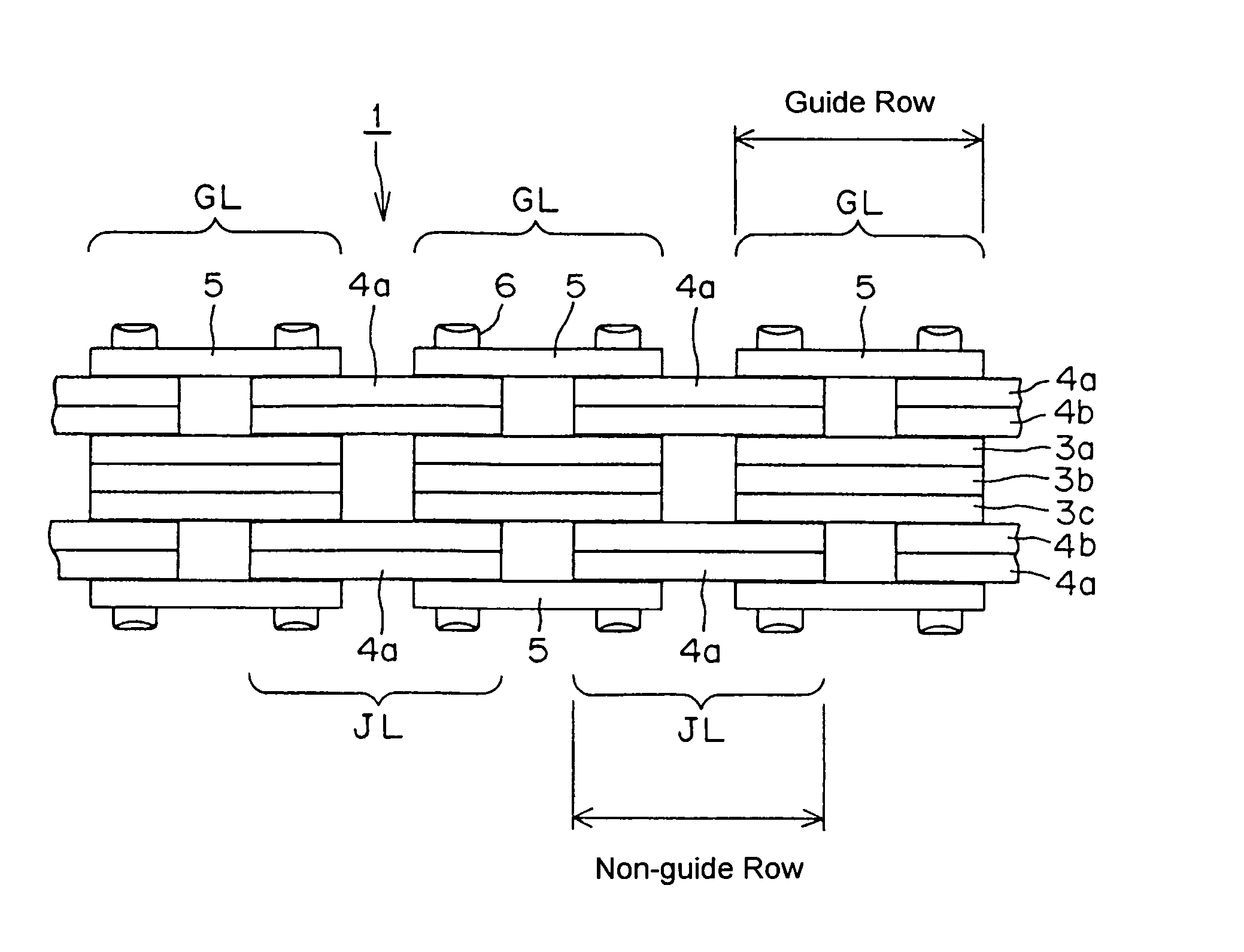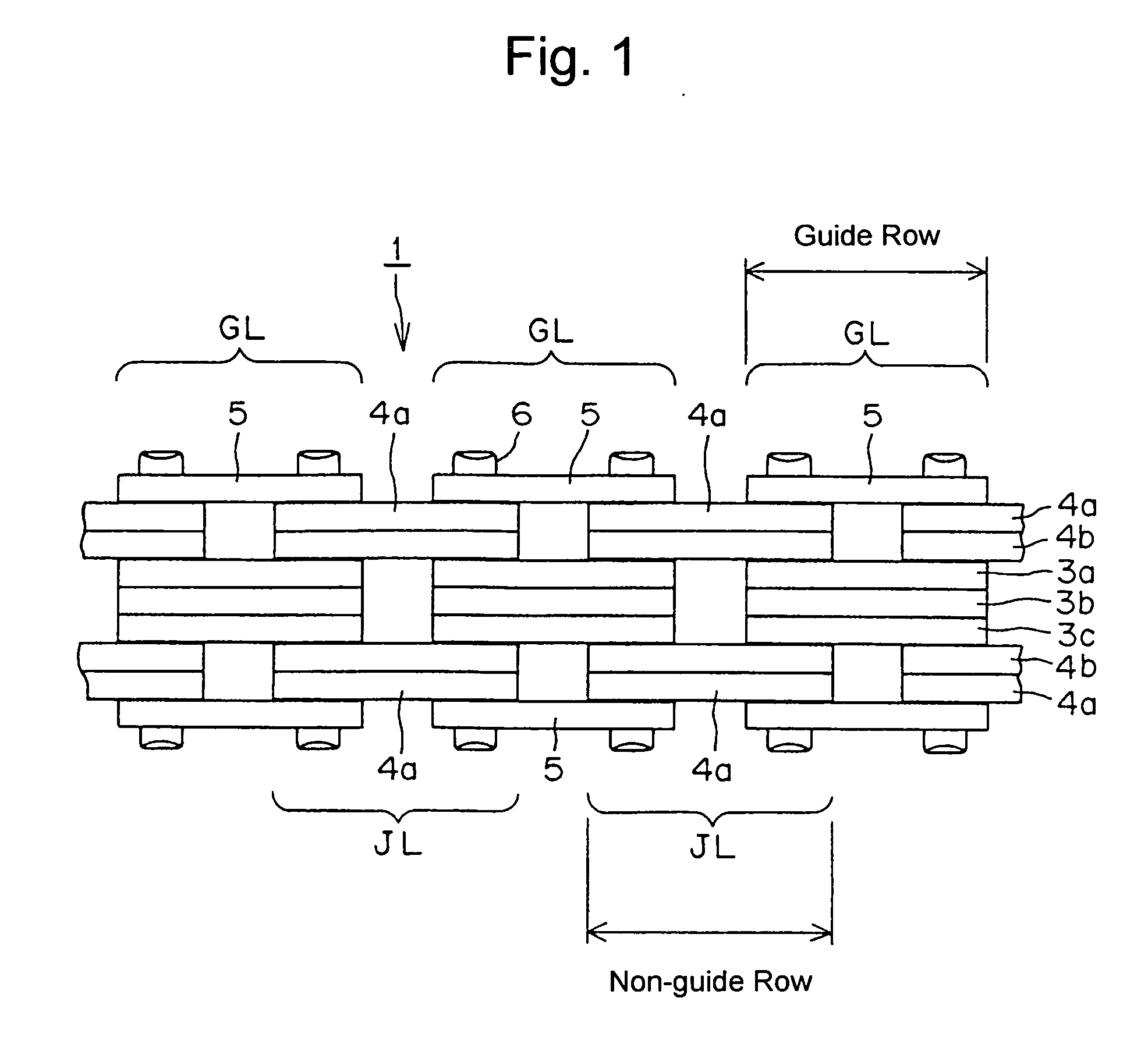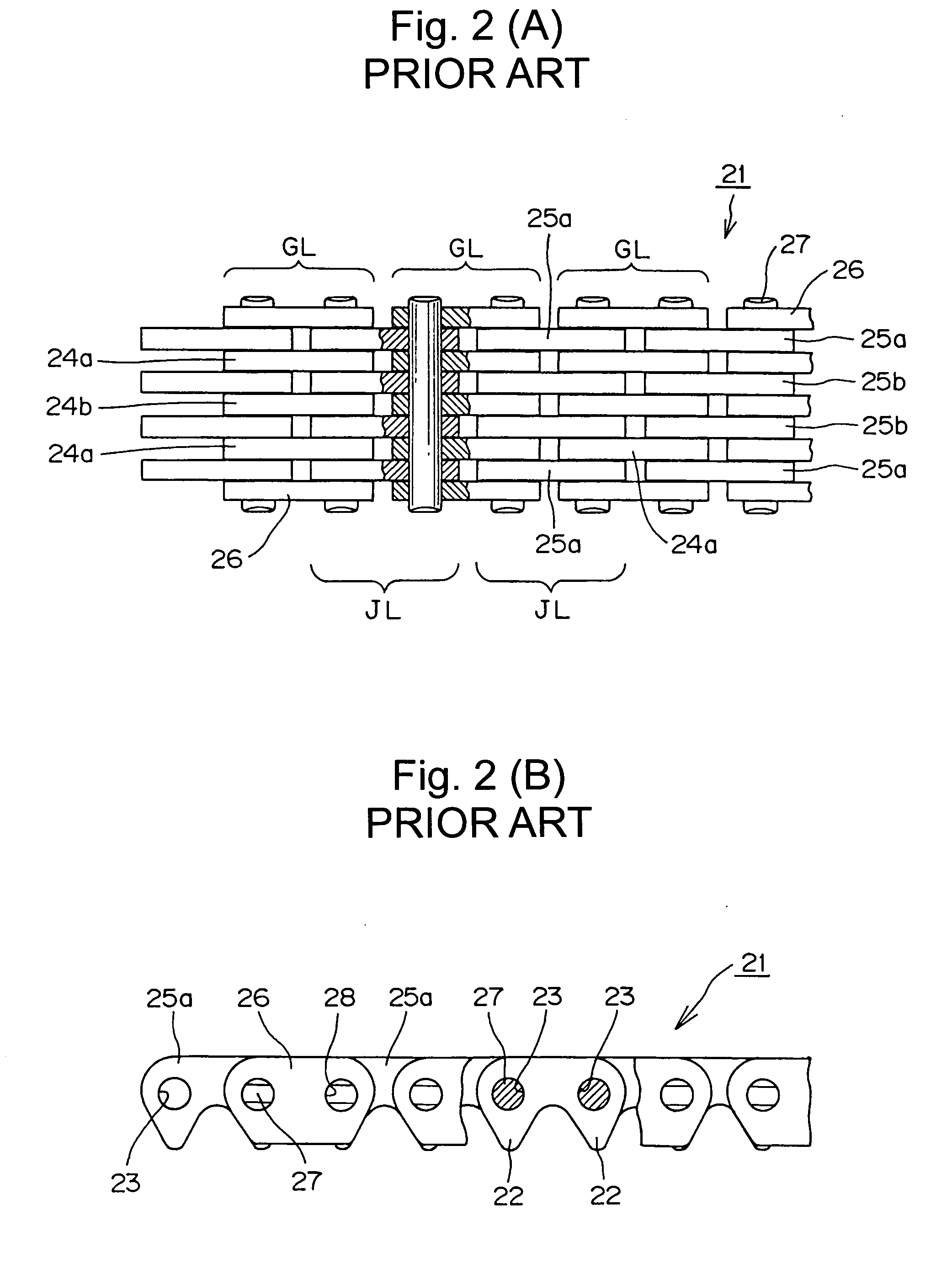Silent chain
a technology of chain and inner link, applied in the direction of chain elements, metal chains, driving chains, etc., can solve the problems of unbalanced load applied to the respective plate, unbalanced tensile load on the link plate, etc., to reduce the stress applied to the inner link plate positioned on the outermost side of improve the joint link row, and suppress the flexure of the guide plate and the connecting pin
- Summary
- Abstract
- Description
- Claims
- Application Information
AI Technical Summary
Benefits of technology
Problems solved by technology
Method used
Image
Examples
Embodiment Construction
[0024] In the silent chain 1, shown in FIG. 1 inner link plates 3a, 3b and 3c, and a pair of guide plates 5, form guide link rows GL, and two sets of link plates 4a and 4b form each joint link row (or “non-guide” row) JL. The plates are connected by connecting pins 6.
[0025] Each of the inner link plates 3a, 3b, 3c, 4a, 4b has a pair of teeth (not shown), and a pair of pin holes (not shown), as in a conventional link plate. The thicknesses of all of the inner link plates 3a, 3b, 3c, 4a, 4b are preferably the same.
[0026] In each guide link row GL, the three inner link plates 3a, 3b and 3c are stacked together, with plate 3b being located at the center of the chain in the widthwise direction. Guide plates 5, which have no teeth, are arranged on both outermost sides of each guide link row GL.
[0027] In each joint link row JL a pair of inner link plates 4a and 4b, which are stacked against each other, is disposed between a plate 3a and a guide plate 5 of an adjacent guide link row, and...
PUM
| Property | Measurement | Unit |
|---|---|---|
| wear elongation | aaaaa | aaaaa |
| tensile | aaaaa | aaaaa |
| stress | aaaaa | aaaaa |
Abstract
Description
Claims
Application Information
 Login to View More
Login to View More - R&D
- Intellectual Property
- Life Sciences
- Materials
- Tech Scout
- Unparalleled Data Quality
- Higher Quality Content
- 60% Fewer Hallucinations
Browse by: Latest US Patents, China's latest patents, Technical Efficacy Thesaurus, Application Domain, Technology Topic, Popular Technical Reports.
© 2025 PatSnap. All rights reserved.Legal|Privacy policy|Modern Slavery Act Transparency Statement|Sitemap|About US| Contact US: help@patsnap.com



